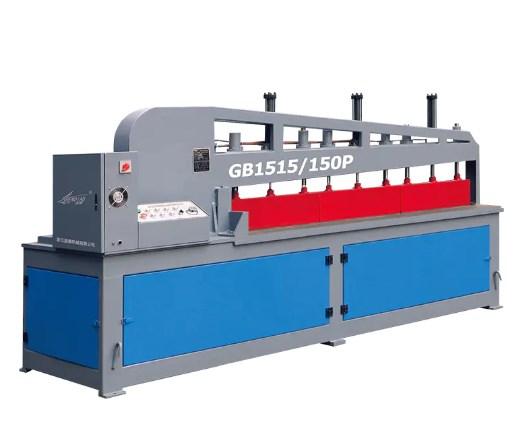The Semi Automatic Circular Saw Machine is an indispensable piece of equipment in the woodworking and metalworking industries, known for its precision and efficiency in cutting various materials. The machine's design combines automation with manual control, offering a balance between the speed of fully automated systems and the flexibility required for more intricate or variable cutting tasks. Herein, we delve into the intricate workings and the step-by-step process that defines the functionality of a Semi Automatic Circular Saw Machine.
At the heart of the Semi Automatic Circular Saw Machine is a circular blade, which rotates at high speeds to cut through materials. The blade is mounted on a spindle, which is driven by an electric motor. The motor's power and the blade's sharpness are critical factors in determining the machine's cutting capabilities. The machine's frame is robust and designed to withstand the vibrations and forces generated during the cutting process.
The operation of a Semi Automatic Circular Saw Machine typically begins with the loading of the material onto the worktable. The worktable is adjustable, allowing for different heights and angles to accommodate a variety of cutting requirements. Once the material is secured in place, the operator positions it against a fence or guide, which ensures straight and accurate cuts.
The machine's semi-automatic feature comes into play with the activation of the cutting process. In some models, the operator must manually push the material through the blade, while in others, a motorized feed system assists in this process. The feed rate can often be adjusted to suit the material being cut and the desired finish of the cut edge.
Safety is a paramount concern with any power tool, and the Semi Automatic Circular Saw Machine is equipped with various safety features. These may include a receiving knife to prevent the material from getting caught on the back of the blade, an automatic brake to stop the blade quickly after cutting, and a safety guard that covers the blade during operation.
The machine's precision is facilitated by a system of guides and bearings that ensure the blade remains aligned and stable during the cut. The operator can make fine adjustments to the blade height and bevel angle to achieve the desired cut profile.
After the cut is made, the material is removed from the machine and the waste material, often in the form of offcuts or sawdust, is cleared away. The Semi Automatic Circular Saw Machine is designed for ease of cleaning and maintenance, with removable guards and a vacuum or dust extraction system to manage the waste.
The process of changing the blade in a Semi Automatic Circular Saw Machine is typically straightforward, allowing operators to switch between different blade types for various materials and cutting tasks. The machine's versatility is enhanced by the availability of different blade styles, such as rip blades for straight cuts, crosscut blades for mitered cuts, and dado blades for grooves and slots.
In conclusion, the Semi Automatic Circular Saw Machine is a complex piece of machinery that offers a high degree of control and precision in cutting operations. Its semi-automatic nature provides the operator with the ability to make manual adjustments when necessary, while still benefiting from the efficiency of automated features. The machine's design, with its emphasis on safety, precision, and adaptability, makes it a valuable asset in many industrial and workshop settings. Regular maintenance and the use of appropriate blades for specific tasks ensure the longevity and consistent performance of the Semi Automatic Circular Saw Machine.

